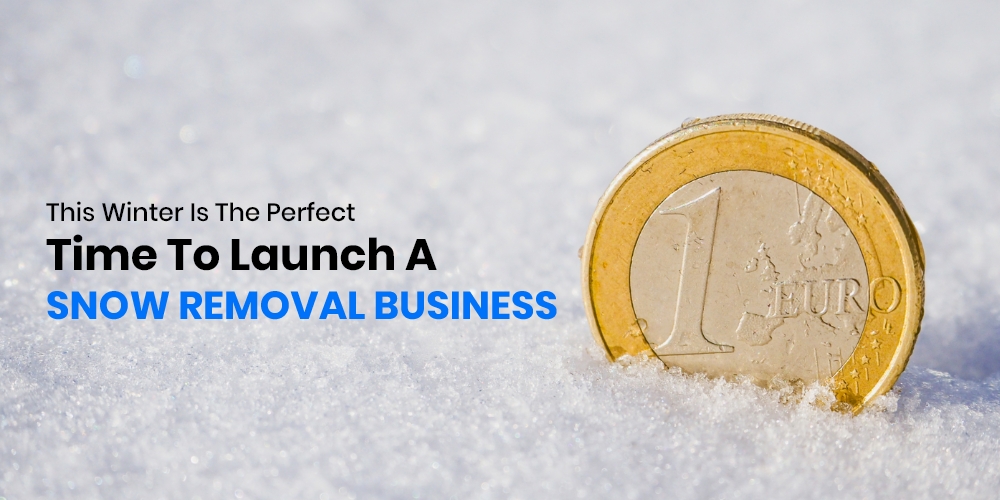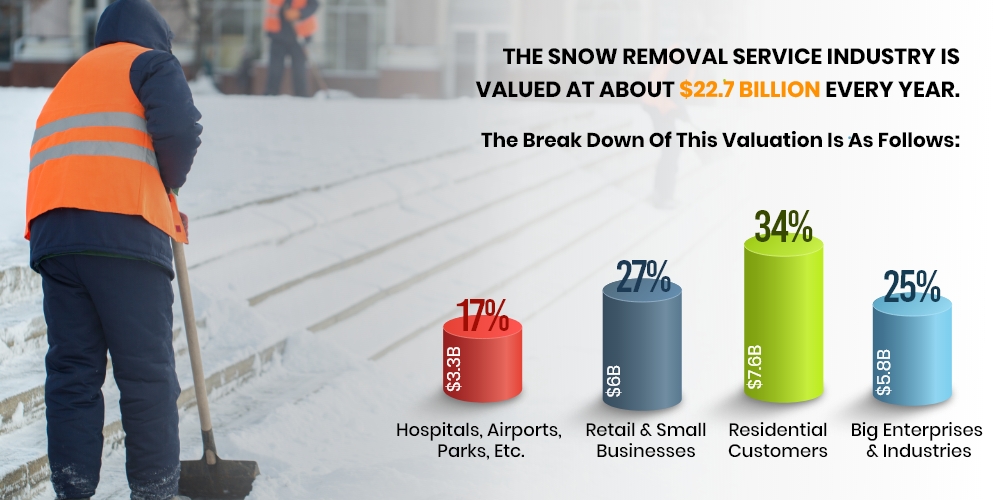Physical Address
304 North Cardinal St.
Dorchester Center, MA 02124
Physical Address
304 North Cardinal St.
Dorchester Center, MA 02124

Winter can be a harsh season, especially in areas where snow is abundant. This is where snow removal services come in to play, helping people and businesses clear the snow from their driveways, sidewalks, and parking lots. If you’re interested in starting a snow removal business, this guide will take you through everything you need to know.
Imagine how much the person offering snow removal services would earn every winter. We can figure out that it’s not uncommon for a snow plowing business to earn $50,000 or more per plow truck during a single Winter!
I know your “ears” have turned by reading this figure because this amount is more than many people earn in a whole year at their full-time job. Now you must be eager just to throw a plow on the front of your truck and start your own snow plow business, but hold your horses for just a moment.
Before you go to your local bank and ask for a loan for a truck and plowing equipment, you must know how the Snow Removal Business works and a few Dos and Don’ts to follow.

Source – IbisWorld
Table of Contents
Before starting any business, it’s important to understand the market you’re entering. When it comes to snow removal, there are a few key things to consider:
A business plan is a crucial component in starting any business, including a snow removal business. A well-written business plan will outline your business goals, strategy, and financial projections. It will also help you secure funding if necessary and keep you on track as you grow your business.
When writing your business plan, consider the following:
Depending on the size of your business, you may need to hire additional staff to help with snow removal. When hiring employees, consider the following:
Snow removal equipment can be expensive, but it’s necessary for running your business. When purchasing equipment, consider the following:
Determining your pricing strategy can be challenging, but it’s important to ensure you’re charging enough to cover your costs and make a profit. When establishing your pricing strategy, consider the following:
Have you seen an angry mama bear protecting her cubs? A person stuck at home due to snow is almost as angry, and that will be the majority of your customer base. If you do excellent work, they’ll recommend you to everyone they know, but if you fail to deliver service, even if it’s not your fault but the machines, you’ll be seeing their wrath.
So, make sure that you have a backup snow removal setup ready in case your existing truck or plow gets damaged or breaks down. If you don’t have a spare, you should work in partnership with other service providers in such situations so that your reputation isn’t hurt in the customer’s sight.
Not everyone lives in Alaska or Greenland, so you need to have an off-season plan to stay earning for the rest of the year. Although snow removal service is a very lucrative and high revenue-generating business venture, you need to have alternate earning models for when it’s not winter.
Now that you know what to do and what not to do while starting a snow removal business, you should also know what business models you can choose from to launch your business.
Here are several different ways that you can make money this winter by plowing snow.
In the beginning, if you are tight on cash or wish to play safe with a limited investment, you can begin as a one-man operation with just you and your plow truck and keep expanding as you see more profits and more work. You can take up residential areas’ snow removal contracts and offer your services to the local residents.
These contracts often are made for the entire year for a fixed fee. For instance, if you make a deal for $500 to clear the locality roads for a year, then it’s fixed. This fee doesn’t factor in how many times snow falls during a year. Now whether you clear the snow every four days or just four times a month, you’ll be making $500 for the year from that client.
You can also make a contract in which it is specified that this much number of removal jobs will be done in $500 and anything above that will need extra payment so that you don’t end up in loss in a record snowfall year.
If you are more ambitious and wish to earn top dollars, then going the commercial route is advised. You create similar contracts as above but with commercial spaces like big corporate buildings, shopping malls, golf courses, etc.
With commercial clients, you’ll be plowing parking lots and huge open spaces instead of residential driveways. Such clients will pay top dollar for your high quality and consistent snow removal service. And the best part is that the contracts may be limited to winter months like from November to March, but you will get paid whether it snows or not.
There are three pricing models based on which you can charge and set your commercial or residential contract. Here are the three models:
Seasonal Rates: With this pricing model, you will earn the same amount, whether there is a record snowfall or no snow at all in the year.
Per Inch Rates: The price of your service depends on how many inches of snow you need to clear, so for snow 50 inches deep, you’ll make five times what you’ll make for clearing 10 inches of snow.
Hourly Rates: What if there is very little snowfall in a given year? Then you run the risk of making a very low profit. Instead, you can charge on an hourly basis, and every hour you spend cleaning will be billed. This model is widely used when you are a sub-contractor, offering your equipment and services via some other main contractor.
Marketing your snow removal business is essential to attracting new customers and growing your business. Consider the following marketing strategies:
Staying organized is essential to running a successful snow removal business. Consider the following to help you stay organized:
Starting a snow removal business can be a challenging but rewarding experience. By understanding your market, developing a comprehensive business plan, building a team, purchasing equipment, establishing a pricing strategy, marketing your business, and staying organized, you’ll be well on your way to success. With hard work and dedication, you can turn your passion for snow removal into a successful and profitable business.